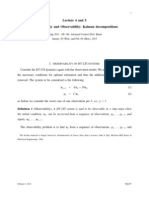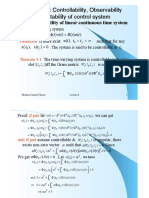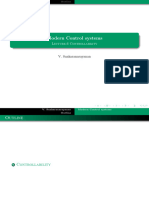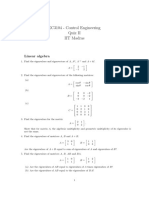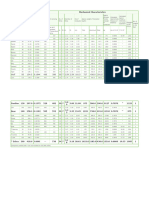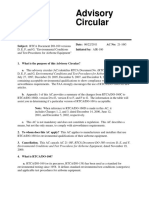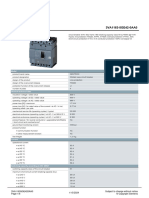0% found this document useful (0 votes)
27 views13 pagesAdditional Lecture - Controllable Decomposition
This document discusses controllable decomposition in linear time-invariant (LTI) systems, focusing on the invariance of controllability under similarity transformations. It presents theorems that establish conditions for controllability and provides an example using a parallel RC circuit to illustrate the concepts. The lecture concludes with an overview of the next module on observability.
Uploaded by
Jahannavi SinghCopyright
© © All Rights Reserved
We take content rights seriously. If you suspect this is your content, claim it here.
Available Formats
Download as PDF, TXT or read online on Scribd
0% found this document useful (0 votes)
27 views13 pagesAdditional Lecture - Controllable Decomposition
This document discusses controllable decomposition in linear time-invariant (LTI) systems, focusing on the invariance of controllability under similarity transformations. It presents theorems that establish conditions for controllability and provides an example using a parallel RC circuit to illustrate the concepts. The lecture concludes with an overview of the next module on observability.
Uploaded by
Jahannavi SinghCopyright
© © All Rights Reserved
We take content rights seriously. If you suspect this is your content, claim it here.
Available Formats
Download as PDF, TXT or read online on Scribd
/ 13




